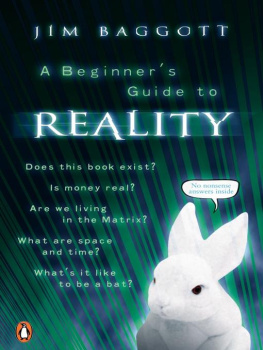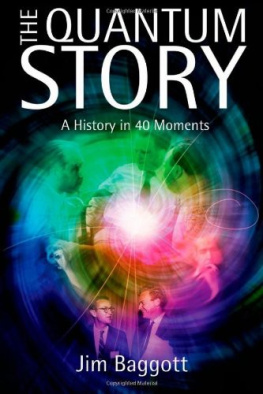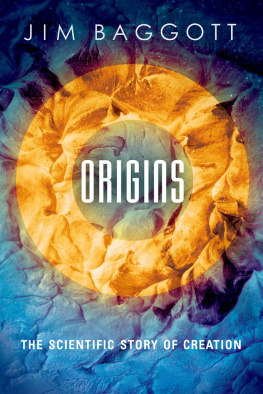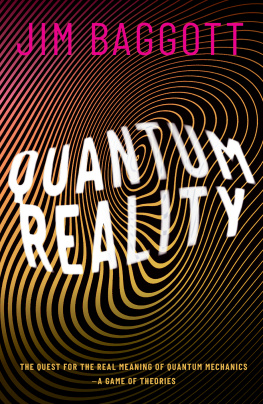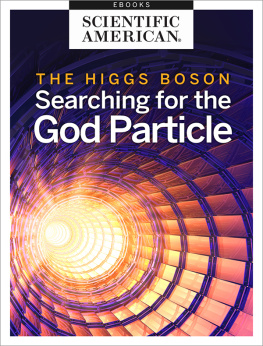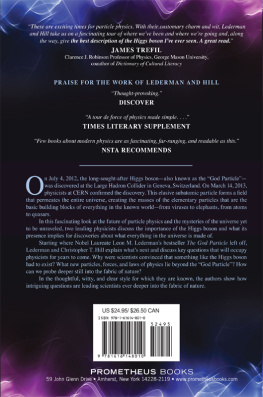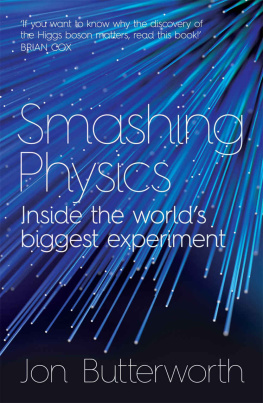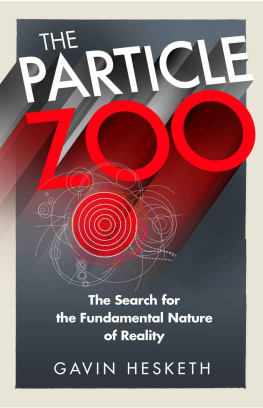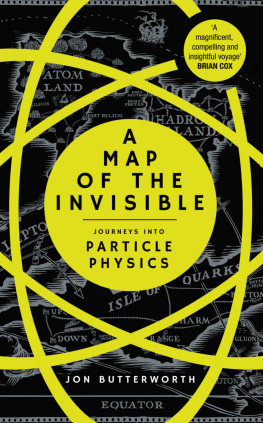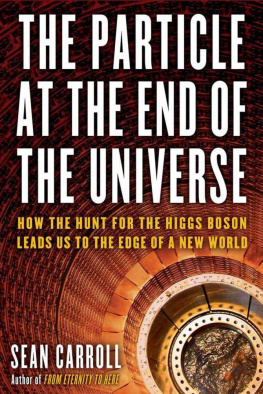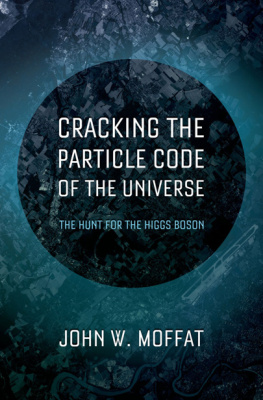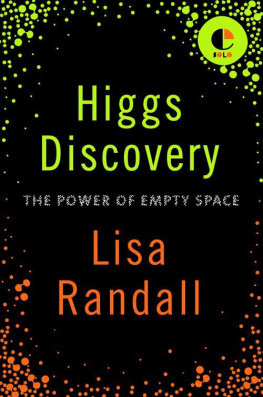HIGGS
HIGGS
The Invention and Discovery of the God Particle
JIM BAGGOTT


Great Clarendon Street, Oxford, OX2 6DP,
United Kingdom
Oxford University Press is a department of the University of Oxford.
It furthers the Universitys objective of excellence in research, scholarship,
and education by publishing worldwide. Oxford is a registered trade mark of
Oxford University Press in the UK and in certain other countries
Jim Baggott 2012
The moral rights of the author have been asserted
First Edition published in 2012
Impression: 1
All rights reserved. No part of this publication may be reproduced, stored in
a retrieval system, or transmitted, in any form or by any means, without the
prior permission in writing of Oxford University Press, or as expressly permitted
by law, by licence or under terms agreed with the appropriate reprographics
rights organization. Enquiries concerning reproduction outside the scope of the
above should be sent to the Rights Department, Oxford University Press, at the
address above
You must not circulate this work in any other form
and you must impose this same condition on any acquirer
British Library Cataloguing in Publication Data
Data available
Library of Congress Cataloging in Publication Data
Data available
ISBN 9780199603497
Printed in Great Britain by
Clays Ltd, St Ives plc
For Ange
Jim Baggott is an award-winning science writer. A former academic scientist, he now works as an independent business consultant but maintains a broad interest in science, philosophy, and history, and continues to write on these subjects in his spare time. His previous books have been widely acclaimed and include:
The Quantum Story: A History in 40 Moments (Oxford University Press, 2011);
Atomic: The First War of Physics and the Secret History of the Atom Bomb 193949 (Icon Books, 2009), shortlisted for the Duke of Westminster Medal for Military Literature, 2010;
A Beginners Guide to Reality (Penguin, 2005);
Beyond Measure: Modern Physics, Philosophy and the Meaning of Quantum Theory (Oxford University Press, 2004);
Perfect Symmetry: The Accidental Discovery of Buckminsterfullerene (Oxford University Press, 1994); and
The Meaning of Quantum Theory: A Guide for Students of Chemistry and Physics (Oxford University Press, 1992).
The news that something very much like the Higgs boson had been discovered, at CERN in Geneva on 4 July 2012, flashed instantaneously around the world like some highly contagious electronic virus. Headlines screamed of this latest triumph of high-energy physics. The discovery made front-page news, was featured in many evening news bulletins, and reached an audience of billions. Signals consistent with a particle that had first been hypothesized or invented in 1964 had at last been found, 48 years later, at a cost of many billions of dollars.
So, what was all the fuss about? What is the Higgs boson and why does it matter so much? If this new particle really is the Higgs, what does it tell us about the material world and the evolution of the early universe? Was finding it really worth all the effort?
The answers to these questions can be found in the story of the so-called Standard Model of particle physics. As the name implies, this is the framework that physicists use to interpret the elementary constituents of all matter and the forces that bind matter together, or cause it to fall apart. It is a body of work built up over many decades of unstinting effort, which represents the physicists best efforts to interpret the physical world around us.
The Standard Model is not yet a theory of everything. It does not account for the force of gravity. In recent years you may have read about exotic new theories of physics which attempt to unify the fundamental forces, including gravity. These are theories such as supersymmetry and superstrings. Despite the efforts of hundreds of theorists engaged on these projects, these new theories remain speculative and have little or no supporting evidence from experiment. For the time being, and despite flaws that have been acknowledged since its inception in the late 1970s, the Standard Model is still where most of the real action is.
The Higgs boson is important in the Standard Model because it implies the existence of a Higgs field, an otherwise invisible field of energy which pervades the entire universe. Without the Higgs field, the elementary particles that make up you, me, and the visible universe would have no mass. Without the Higgs field mass could not be constructed and nothing could be.
It seems we owe quite a lot to the existence of this field. This is one of the reasons why the Higgs boson, the particle of the Higgs field, has been hyped in the popular press as the God particle. This is a name heartily despised by practising scientists, as it overstates the importance of the particle and draws attention to the sometimes uneasy relationship between physics and theology. It is, however, a name much beloved by science journalists and popular science writers.
Many of the predicted consequences of the Higgs field were borne out in particle collider experiments in the early 1980s. But inferring the field is not the same as detecting its tell-tale field particle. It is therefore immensely reassuring to know that the field is very probably here, there, and everywhere. The possibility that the Higgs boson might not have been found was very real, and the implications for the Standard Model were potentially devastating.
I began writing this book in June 2010, two years before the discovery was made. I had just completed the manuscript of another book, called The Quantum Story: A History in 40 Moments which, as the title implies, is a history of quantum physics from 1900 to the present day. That book covered the development of the Standard Model and the invention of the Higgs field and its particle. A few months earlier CERNs Large Hadron Collider reached record protonproton collision energies of seven trillion electron volts, and I figured that a discovery might be possible within the next few years. Happily, I was proved right.
The Quantum Story was published in February 2011. The present book is based, in part, on that earlier work.
My thanks go to Latha Menon and the delegates at Oxford University Press, who were ready to risk commissioning a book about a particle that hadnt yet been discovered. I have followed developments at CERN through the official channels, but acknowledge a debt to a number of high-energy physics bloggers, including Philip Gibbs, Tommaso Dorigo, Peter Woit, Adam Falkowski, Matt Strassler and Jon Butterworth. Thanks also to Jon Butterworth, Sophie Tesauri, James Gillies, Laurette Ponce, and Lyndon Evans for taking the time to talk to me and share their growing sense of excitement. I would also like to express my gratitude to Professors David Miller, and Peter Woit, who read and commented on the draft manuscript, and to Professor Steven Weinberg, who also read through the draft manuscript and kindly contributed a personal perspective in his Foreword. Be assured that the errors that remain are all my own work.
Jim Baggott
Reading, 6 July 2012.
FOREWORD
by Steven Weinberg
Next page


